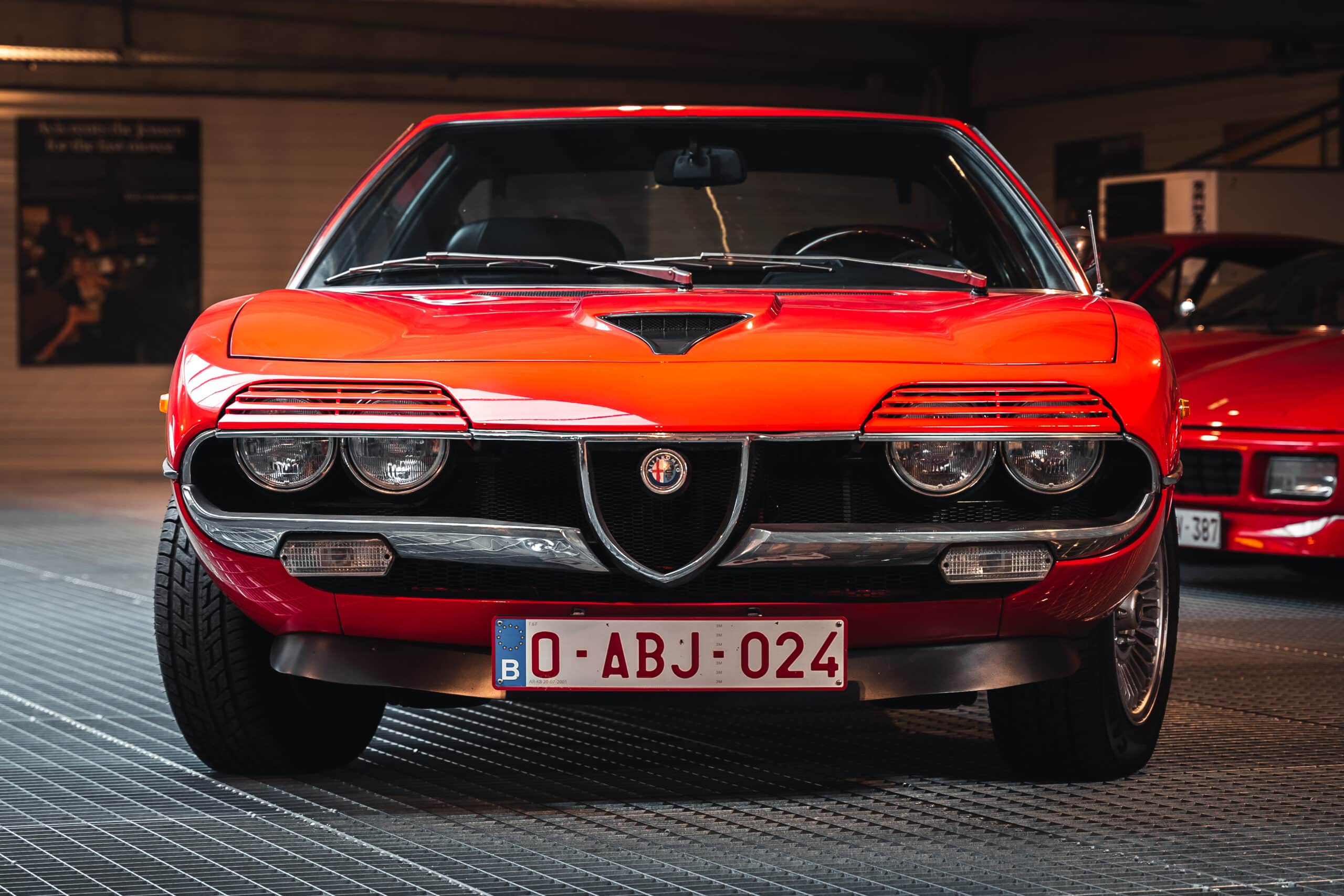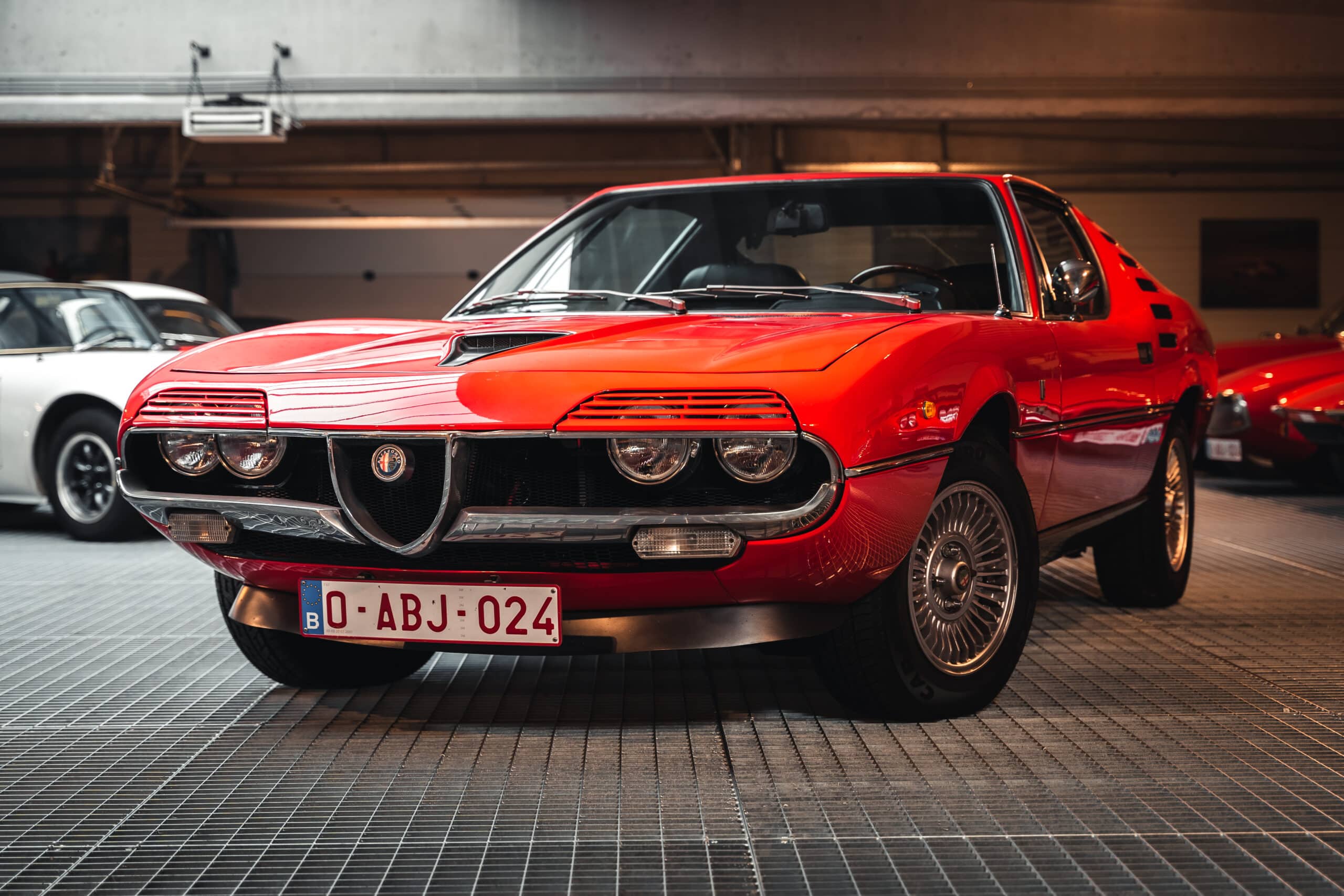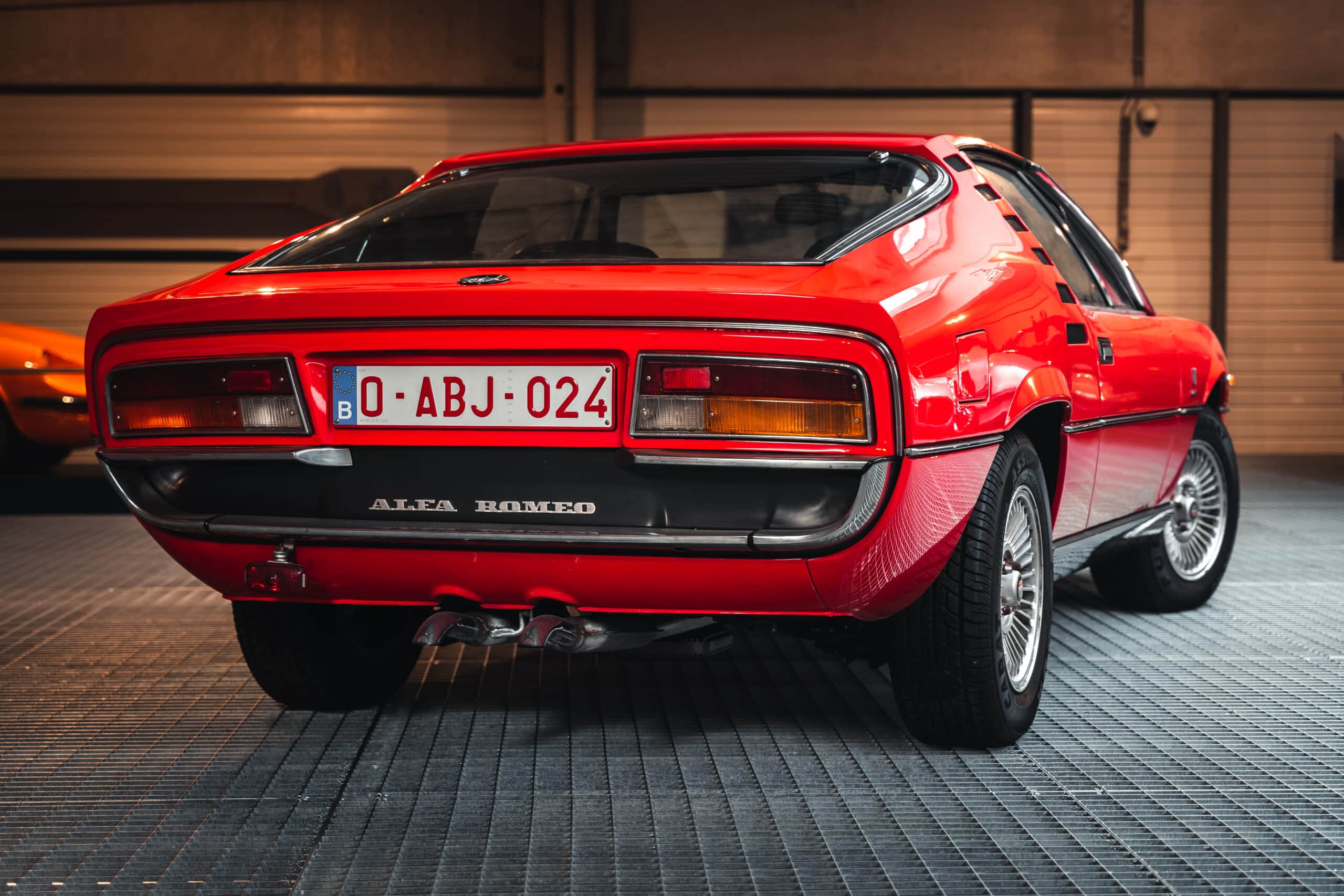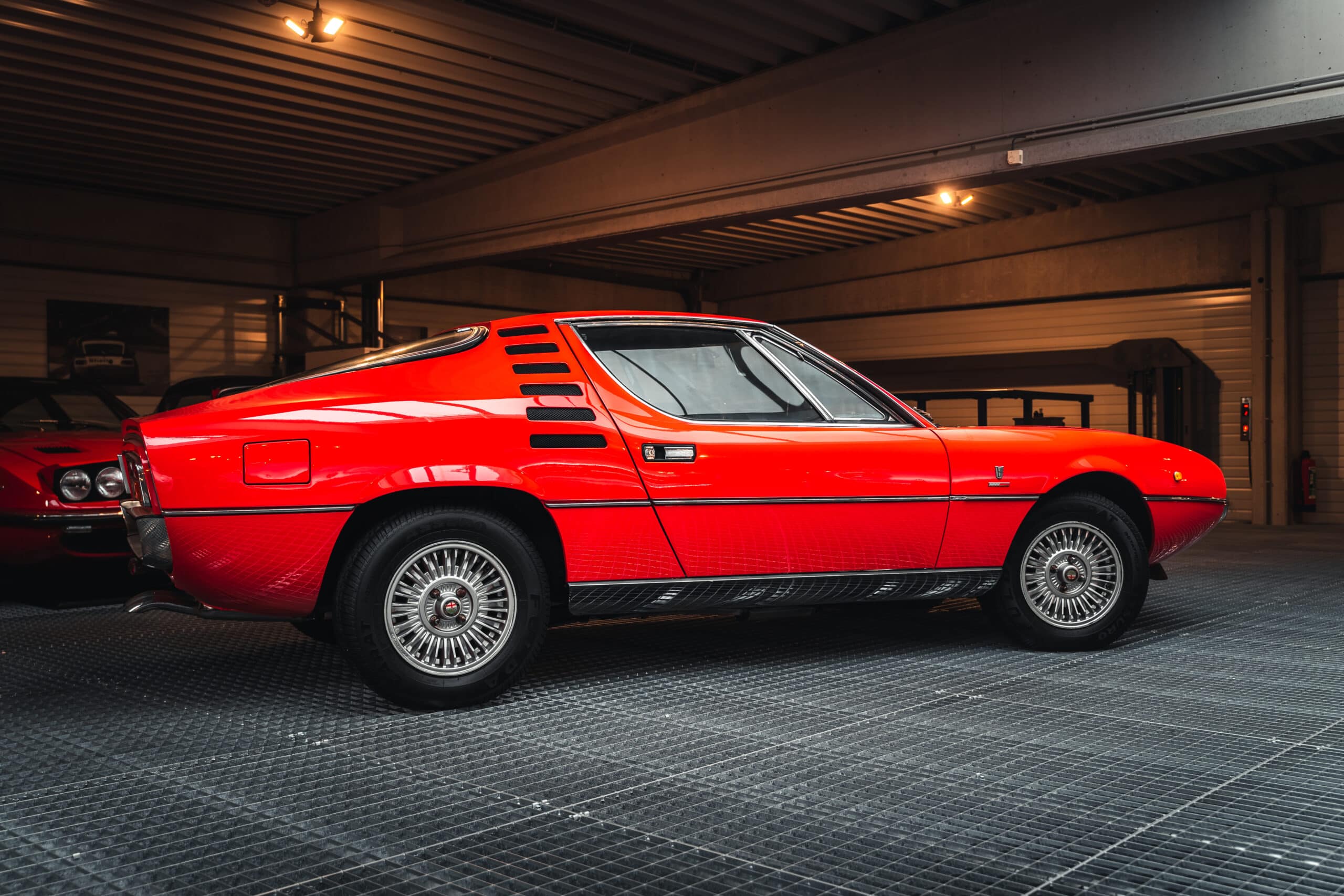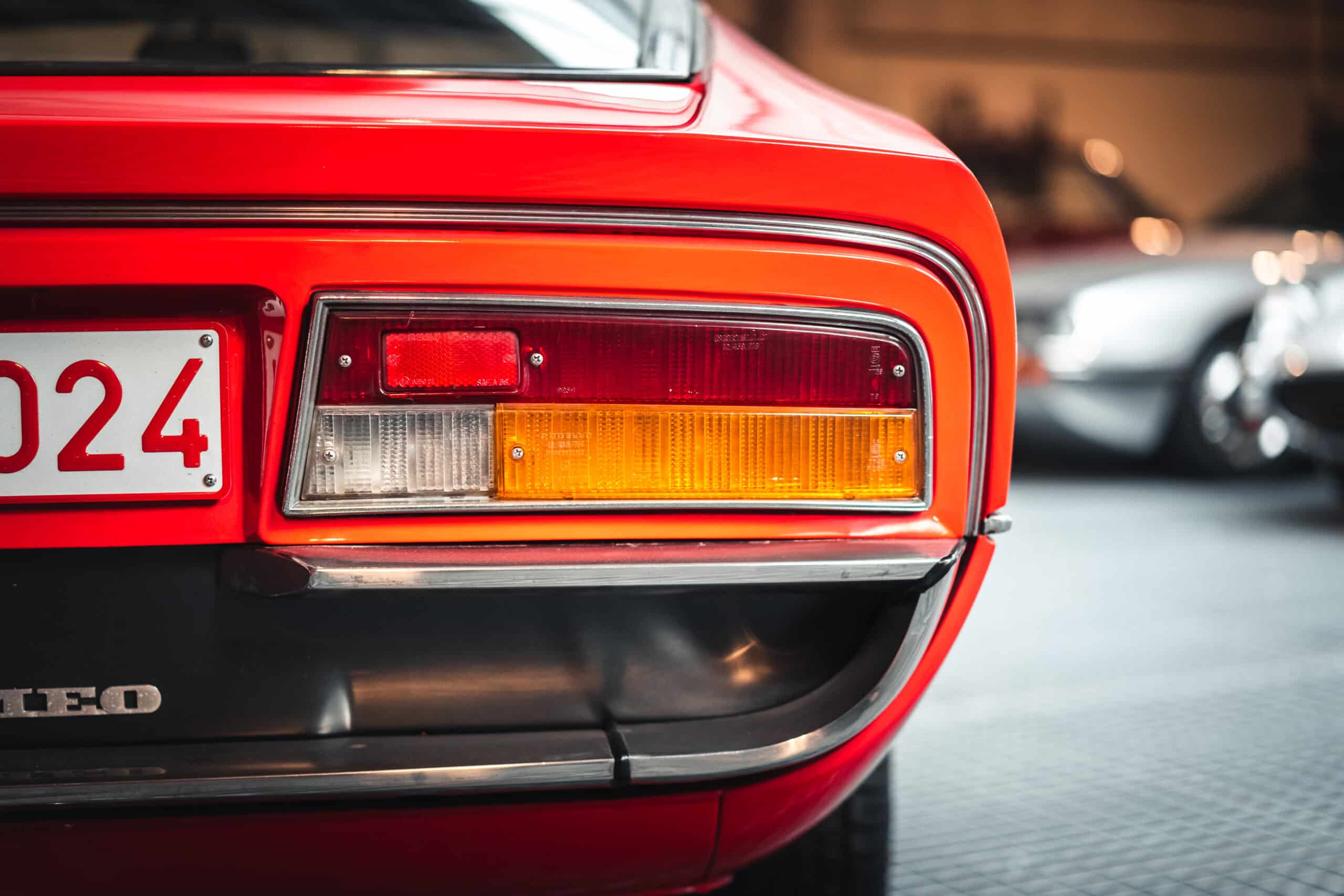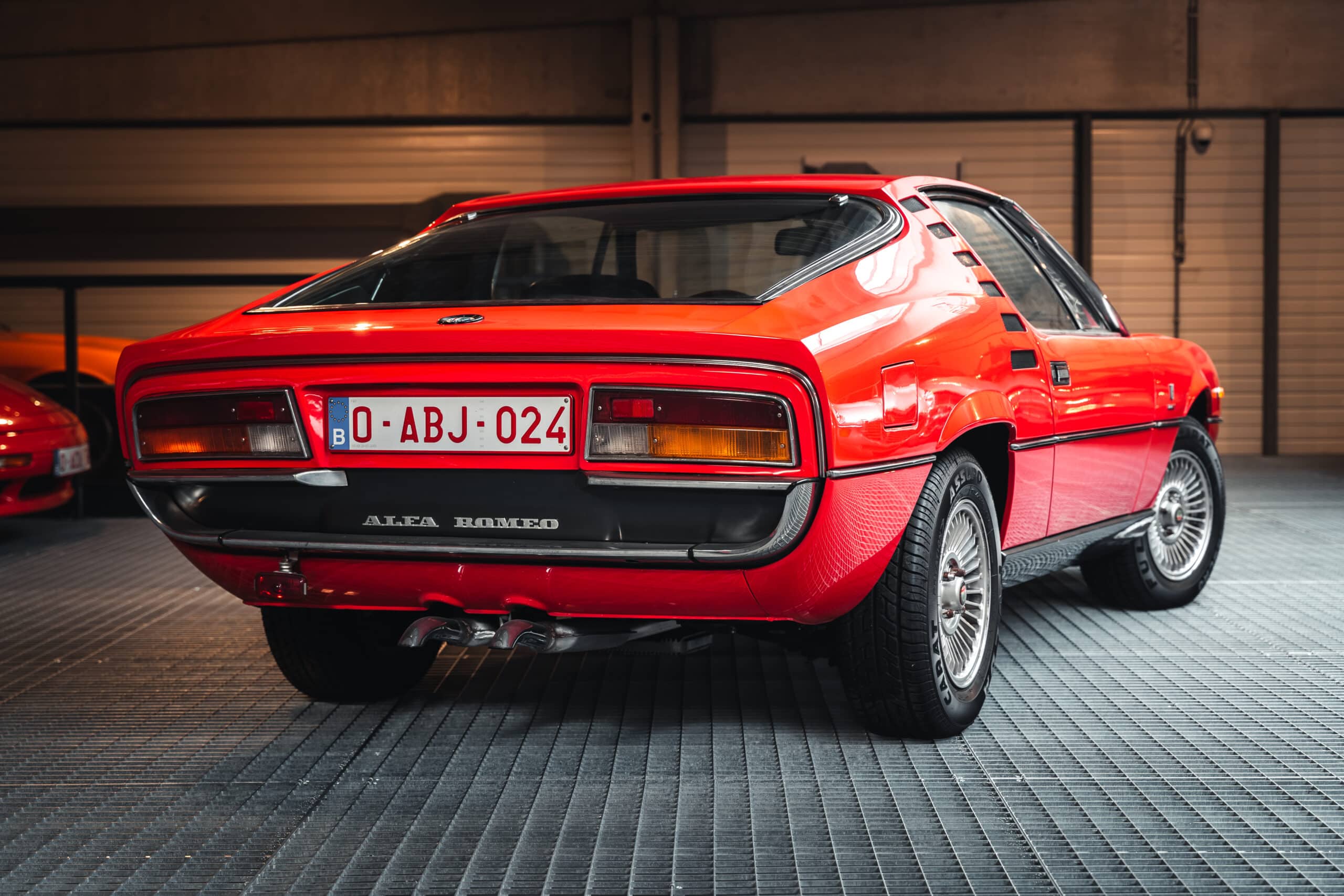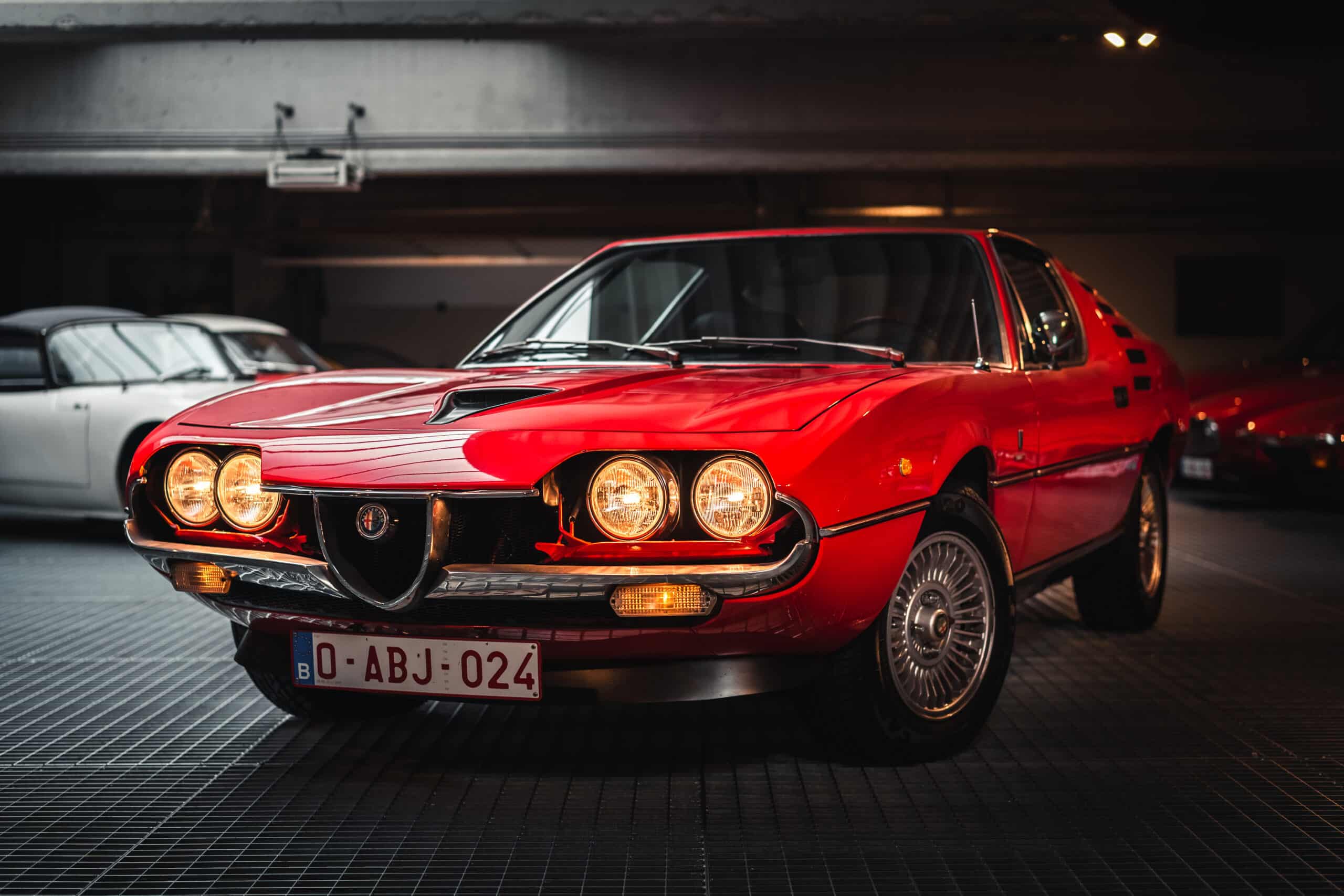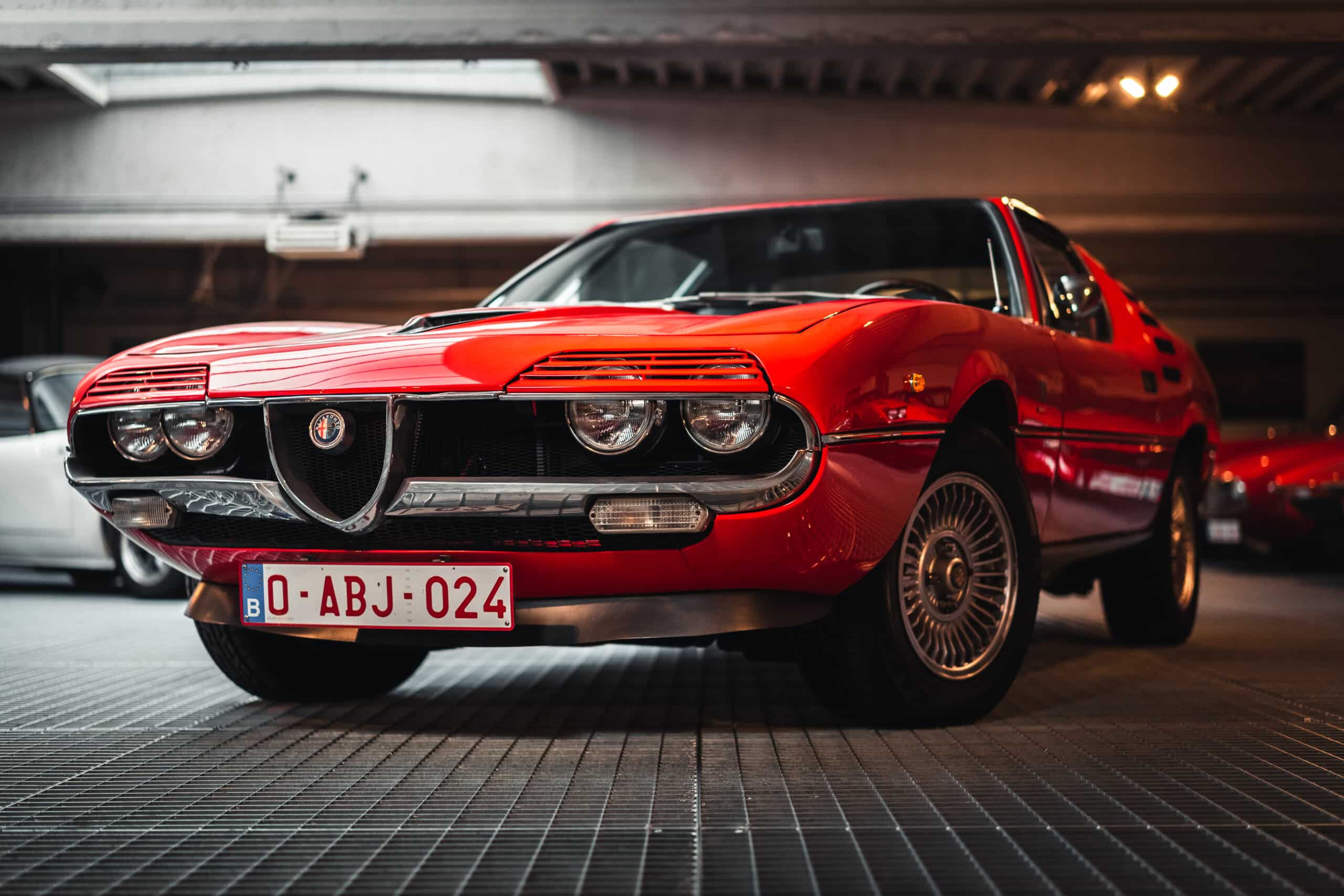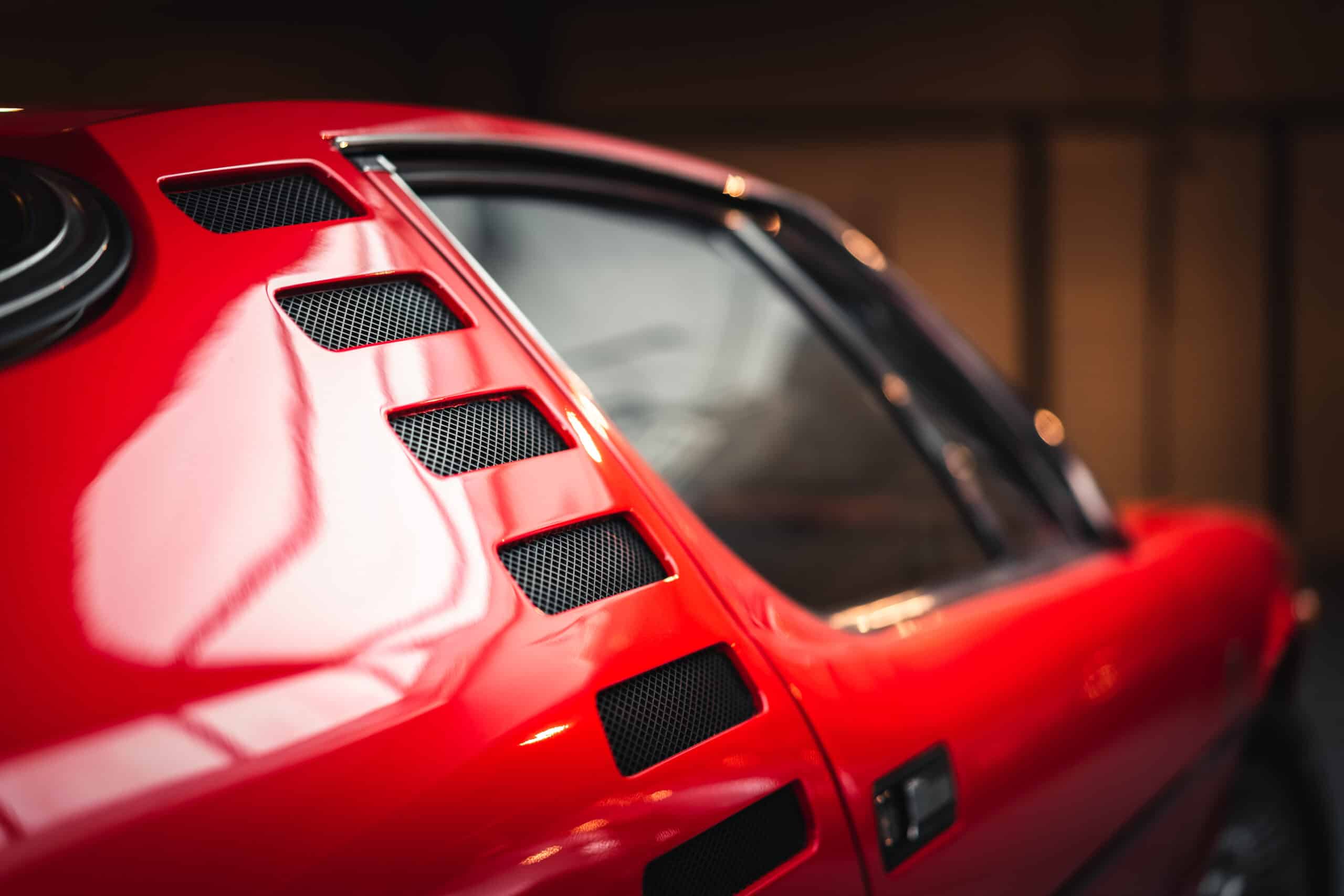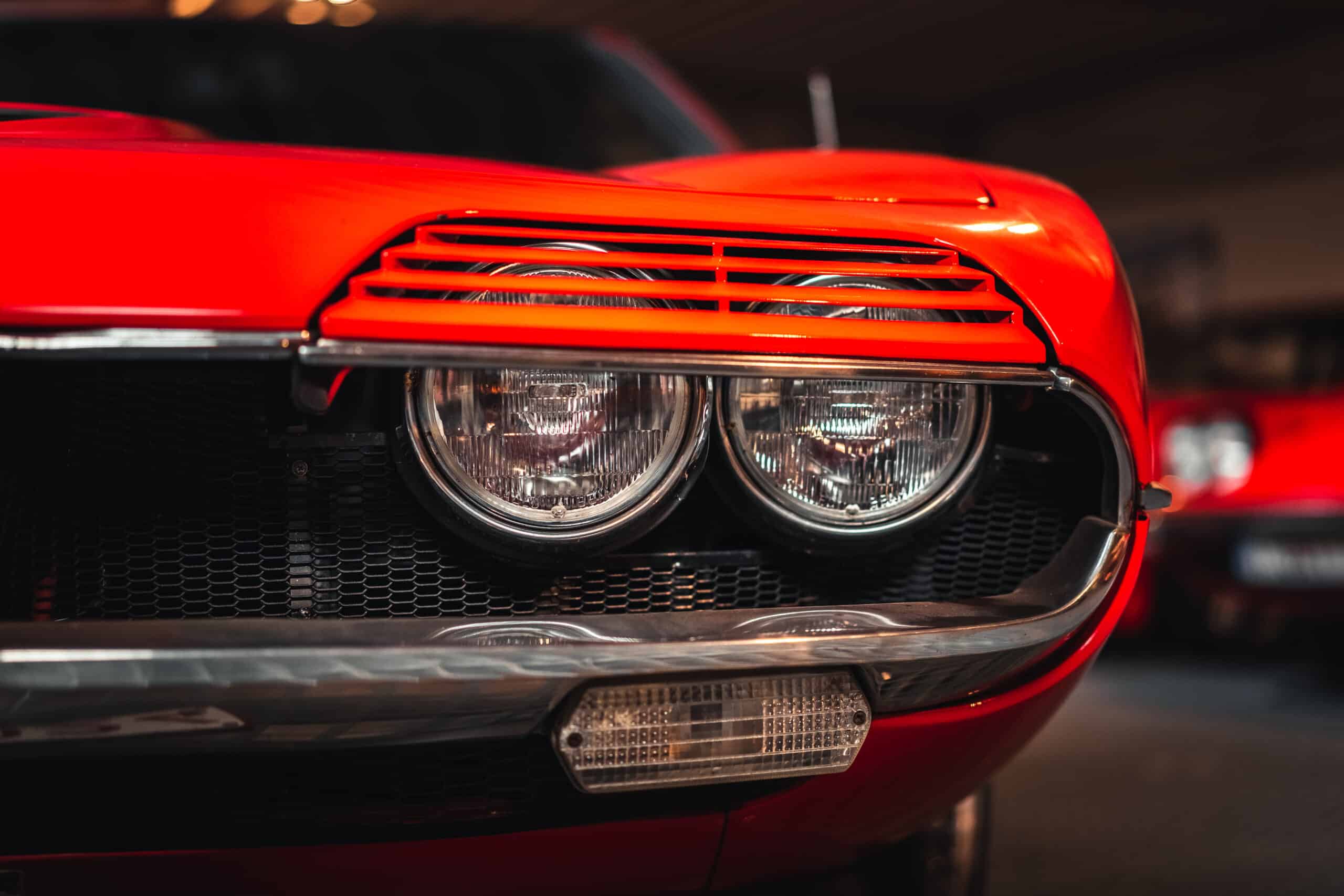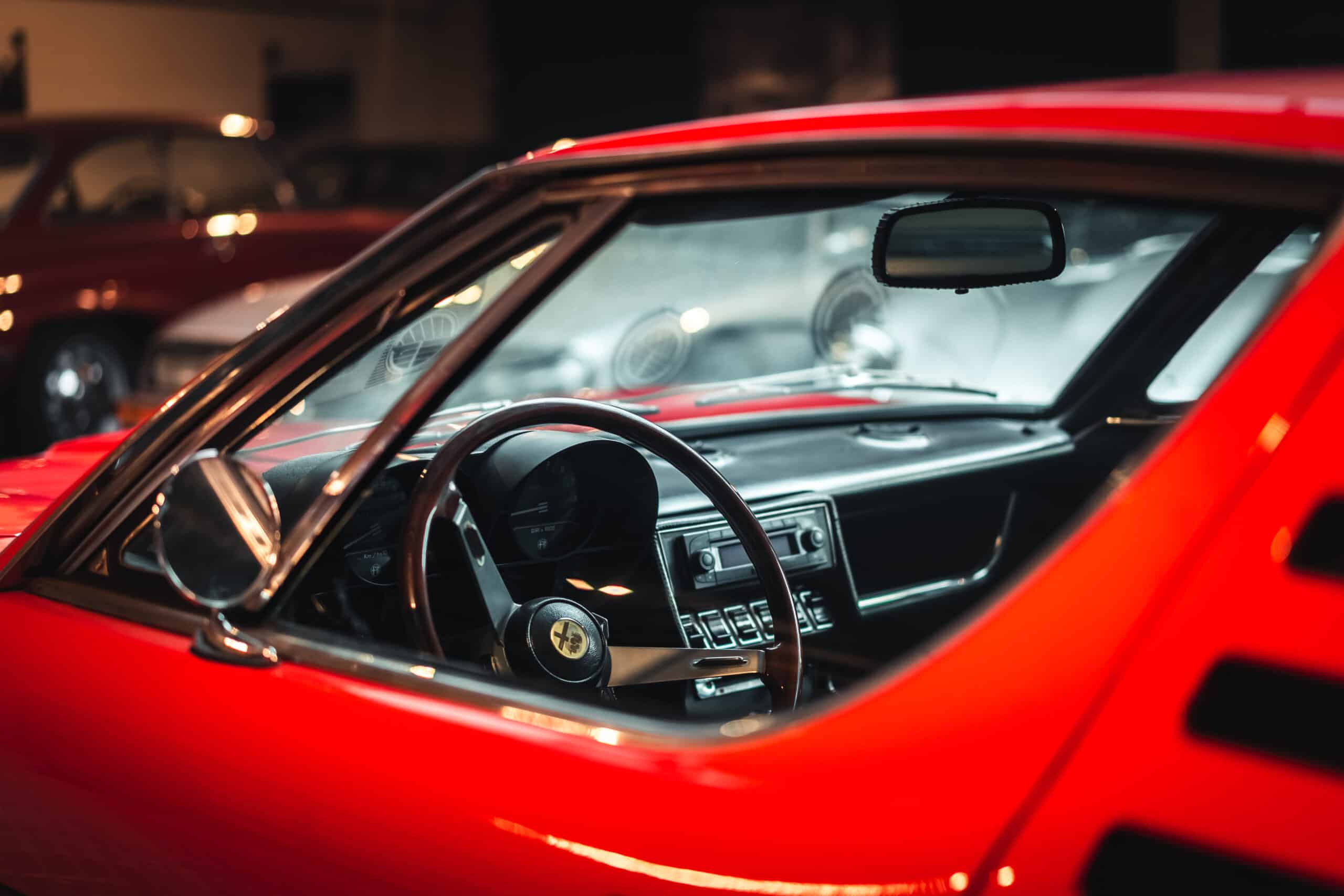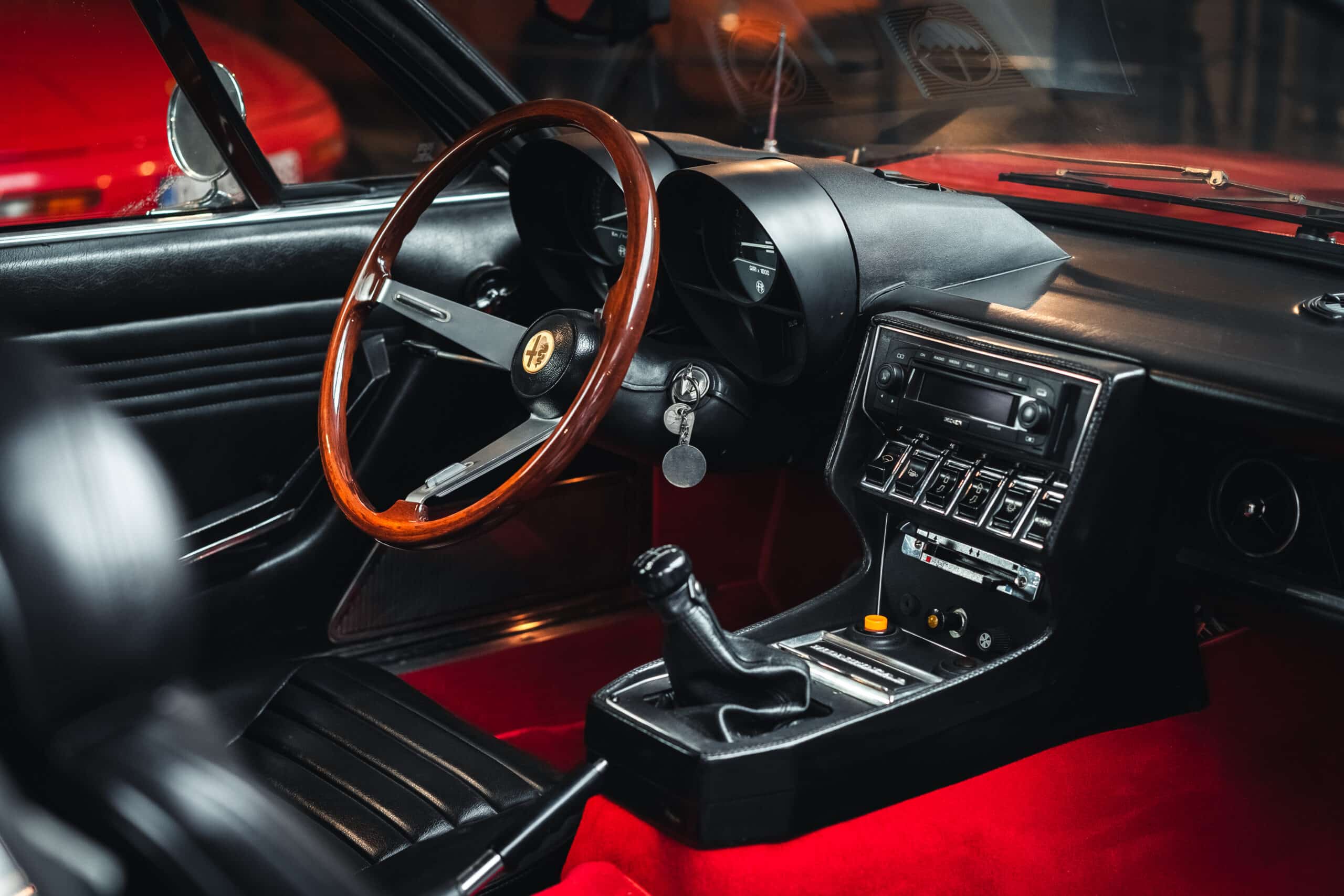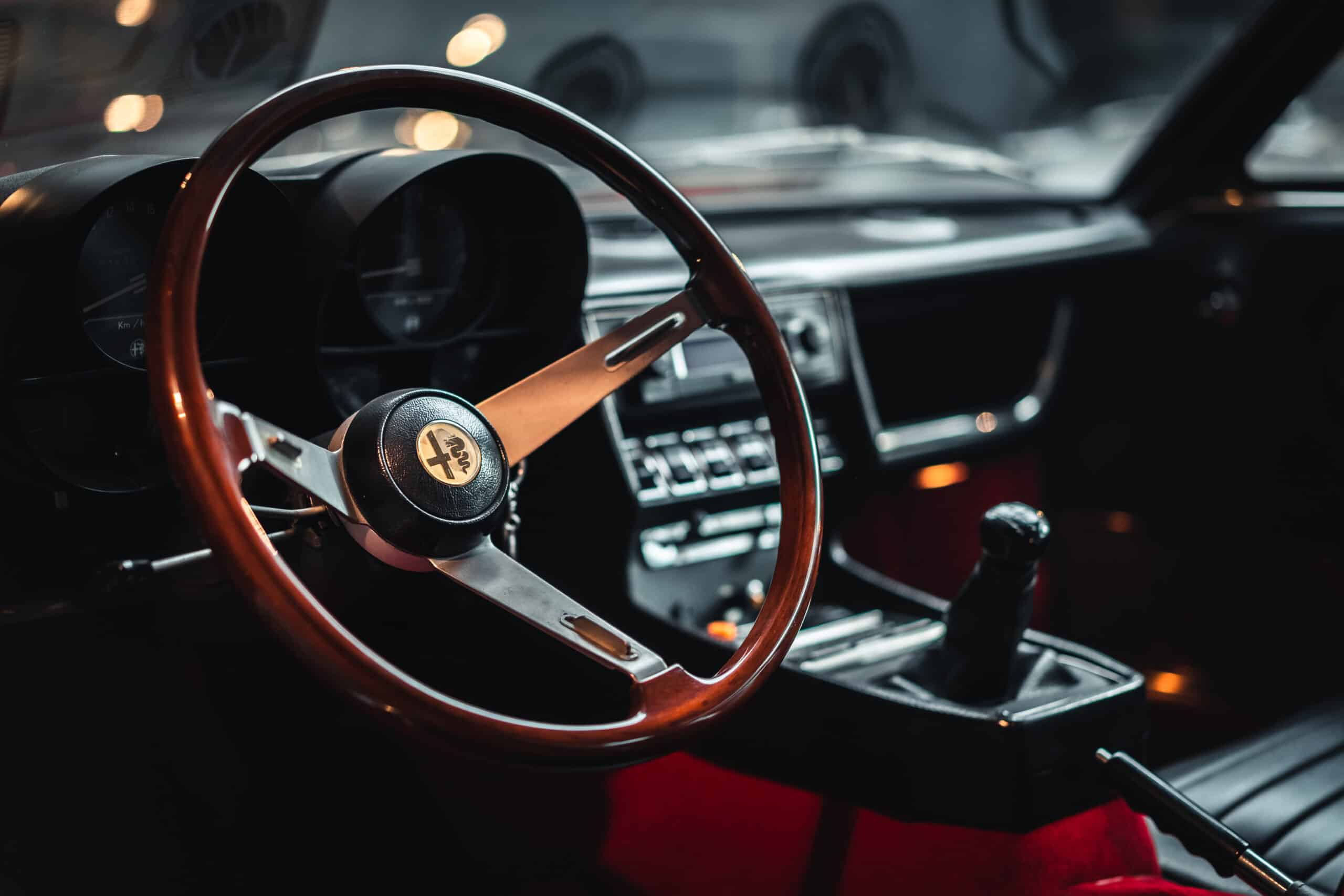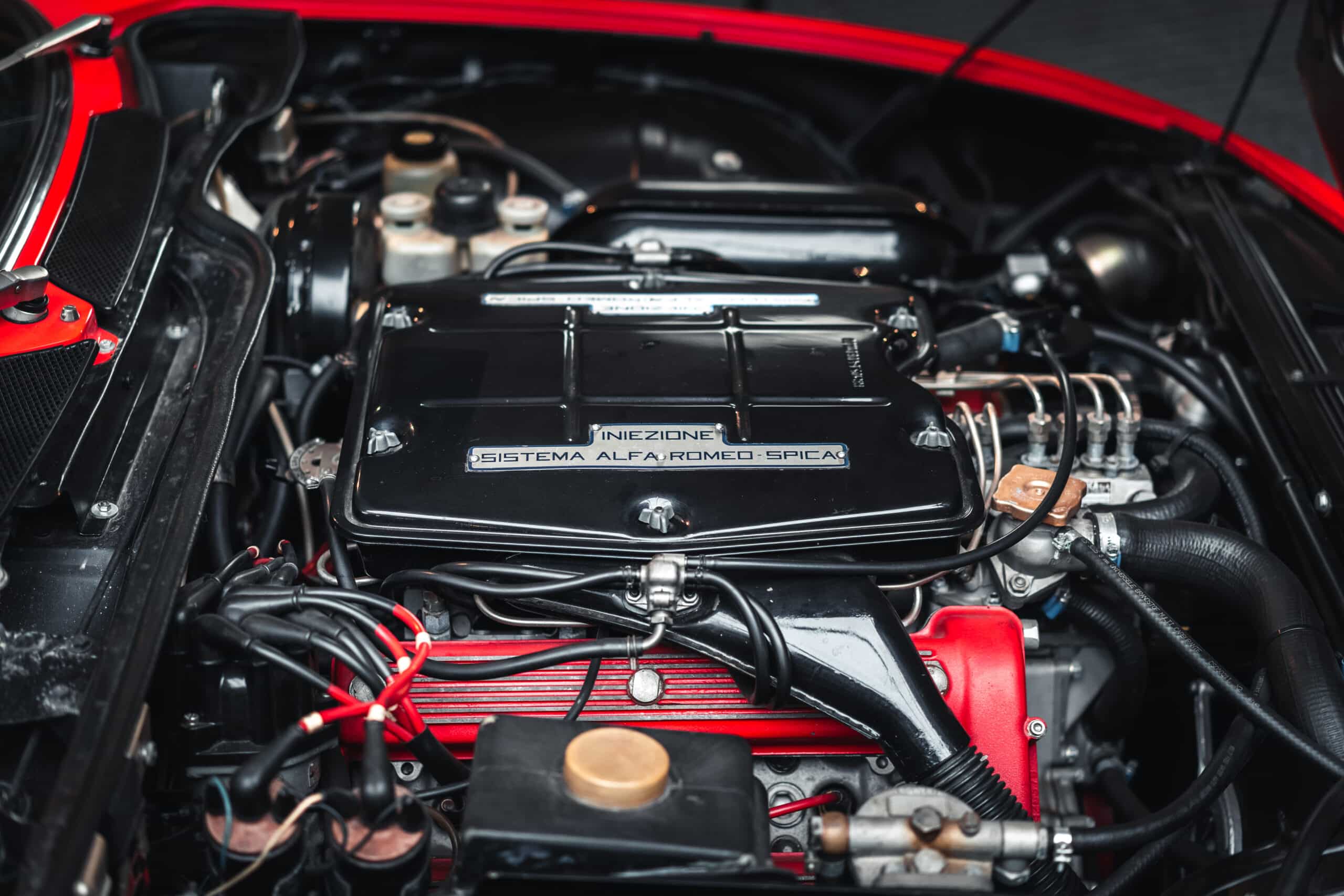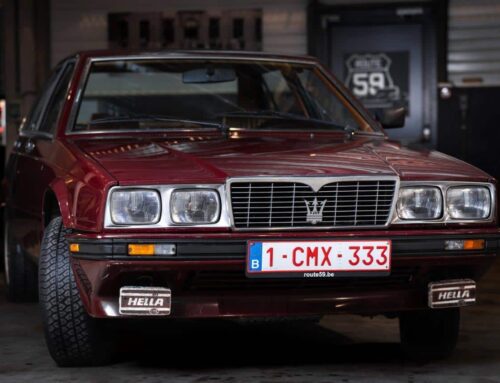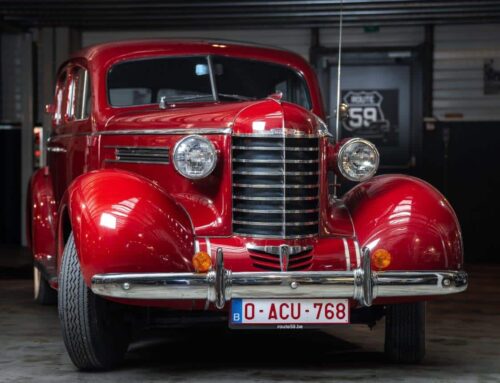Alfa Romeo Montreal
| Brand | Alfa Romeo |
| Model | Montreal |
| Color | Red |
| Transmission | Manual 5-speed |
| Pk | 200 ch |
| Year | 1974 |
| Price | Not for sale |
For the 1967 World’s Fair in Montreal, Alfa Romeo was chosen from among all the international manufacturers to present a car that represented “the highest aspiration of modern man in terms of cars”.
Mike Nichols’ 1967 film “The Graduate” celebrated the Spider Duetto as one of the most sought-after cars, as it embodied the spirit of freedom that prevailed in those years. It’s a golden age for Alfa Romeo, which becomes a worldwide icon. The popularity of the Milanese manufacturer was not lost on the organizers of EXPO 1967, whose theme was “Man and his World”. Alfa was asked to build a car that represented the ultimate incarnation of the automobile at the time.
However, the World’s Fair is only nine months away, and the company’s joy at having been selected for the honor is tempered by the pressure of having to create an exceptional car in record time. It was out of the question to produce a car entirely from scratch. The Giulia Sprint GT was chosen as the base, and Carrozzeria Bertone was commissioned to style the bodywork.
In Bertone’s workshop, 29-year-old Marcello Gandini designed an elegant, low-slung coupé. The originality of the design is due in large part to the low grille and plunging hood, which half-hides the headlamps behind distinctive louvered eyelids, a new and innovative solution that improves the car’s aerodynamic profile. The sloping windshield, the two long L-shaped doors and the six air vents on each C-pillar are also among the many styling features that will become emblematic of this model. The almost horizontal glass tailgate, the Kamm rear spoiler and the double exhaust tailpipe in the center are other distinctive touches. Two identical models were produced, both painted pearl white.
The two concept cars – now called Alfa Romeo Montreal Expo – are on display at the entrance to the World’s Fair, in the pavilion entitled “The Producer Man”. Thanks to a special mirror effect, the image of the two prototypes was repeated endlessly throughout the exhibition space. Both cars are now part of the FCA Heritage collection and are housed in the Alfa Romeo History Museum.
The extraordinary success of the two concept cars at Expo 1967 convinced Alfa Romeo management to create a coupe very similar to the Bertone prototype, but with improved mechanicals, including a powerful V8 engine from the 33 Stradale.
Marcello Gandini puts his design talent to good use, transforming the EXPO 67 prototype into a mass-produced touring sedan. The hood has been raised to accommodate the 33 Stradale’s V8 engine, displacement has been increased to 2.6 liters and power has been reduced from 130 hp to around 77 hp/liter to make the car more docile and suitable for road use. The exterior styling has also been modified, and the mass-produced Montreal is slightly taller than the two prototypes exhibited in Canada, although the headlamp covers have been retained. The wide range of colors available accentuates the vehicle’s personality and appeals to contemporary tastes, almost in contrast to the “lunar” pearly white finish chosen for the two concept cars. The most eye-catching colors were metallic gold, Verde Termico green, Marrone Luci Di Bosco brown beige and the emblematic lobster orange, as on display at the Alfa Romeo Museum in Arese.
The Montreal was presented at the Geneva International Motor Show in March 1970, but was not available to order until two years later. The price was set at 5,700,000 lire.
Between 1970 and 1977, a total of 3925 cars were produced. This limited number is explained by the decline in popularity of sports cars caused by the oil crisis of the 1970s. Even today, she draws crowds with her curvaceous figure and elegance, traits she shared with Hollywood divas during their golden age. And Hollywood doesn’t seem to have forgotten Montreal: in 2017, a magnificent rare black specimen made a striking appearance alongside Charlize Theron in the film Atomic Blonde.


